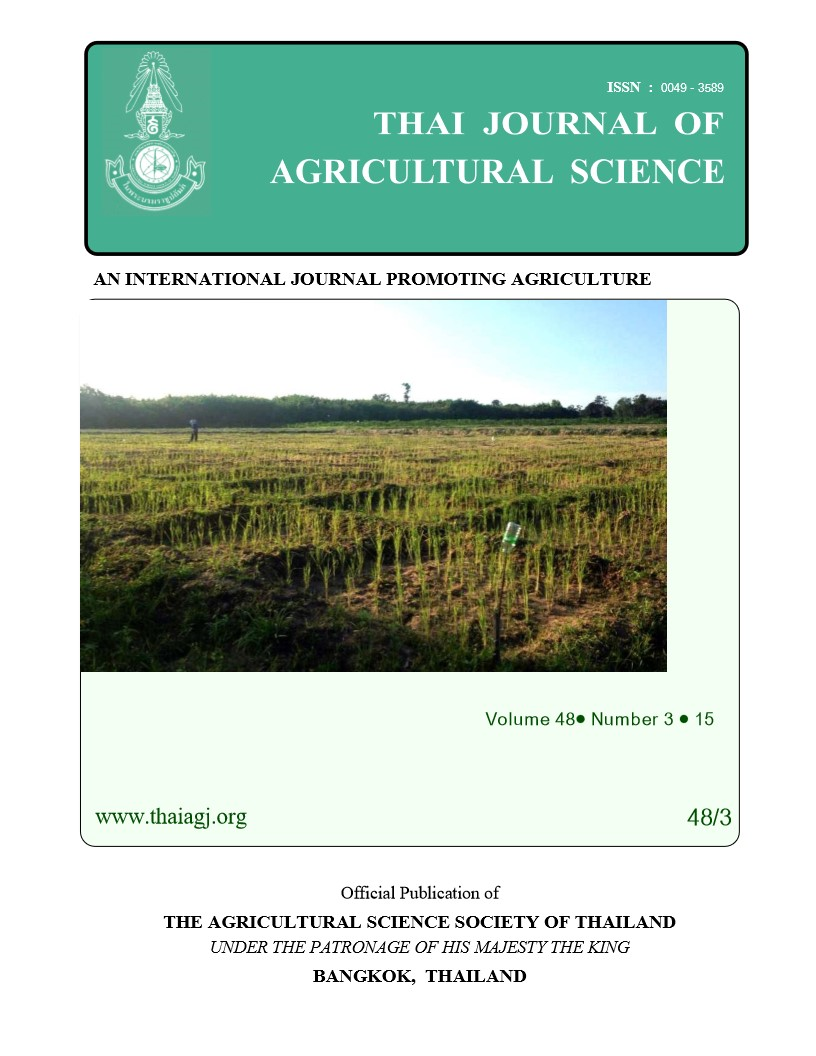Forms of Acidity in Potential, Active and Post-Active Acid Sulfate Soils in Thailand
Main Article Content
Abstract
Acidity generated by the oxidation of sulfides, especially pyrite, during development of acid sulfate soils (ASS) has adverse impacts on soil quality and ecosystems. Agricultural use of ASS in Thailand has resulted in widespread development of ASS and associated soil acidity. It is necessary to understand the nature of acidity and change in other properties that occur during the several stages of ASS development. In the present study, we determined the forms of acidity in potential (PASS), active (AASS) and post-active (PAASS) acid sulfate soils from the Lower Central Plain and the Southeast Coast regions of Thailand. The complete suspension peroxide oxidation combined acidity and sulfur method (SPOCAS) was used to measure acidity fractions (actual acidity, sulfidic acidity and retained acidity), reduced-inorganic sulfur and acidneutralizing capacity (ANC). These ASS do not contain ANC due to the absence of carbonate minerals. pH buffering capacity is provided by the dissolution of phyllosilicate minerals, organic carbon and (hydr)oxide minerals. The amounts of reduced sulfur in PASS and AASS are above the threshold criterion for ASS management planning (300 mg kg-1), but amounts are smaller for PAASS because of their longer history of management. A positive relationship exists between reduced sulfur and sulfidic acidity and a large amount of this acidity is liberated when the soils become oxidized by natural or human-induced drainage. The AASS contain larger amounts of actual acidity compared to PASS and PAASS. Jarosite retains acidity where sulfide oxidation has occurred, especially in the partly oxidized layer of AASS. This research concludes that the soil acidity has been ameliorated by the long term management of ASS which includes liming and periodic flooding.


